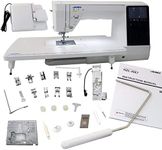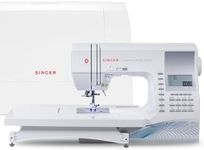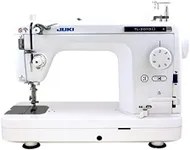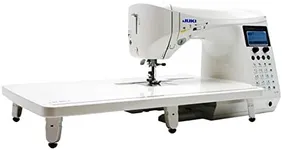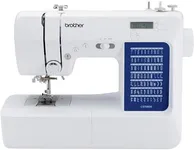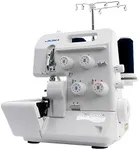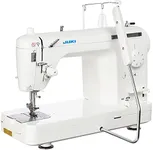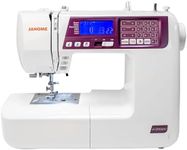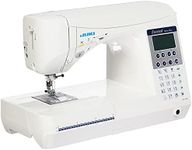Buying Guide for the Best Quilting Sewing Machines
Choosing the right quilting sewing machine can make a big difference in your sewing experience, whether you’re a beginner or an experienced quilter. The best approach is to think about the types of projects you want to tackle, how often you plan to sew, and what features will make your work easier and more enjoyable. Understanding the key specifications will help you match a machine to your needs, ensuring you get a tool that supports your creativity and skill level.Stitch OptionsStitch options refer to the variety and types of stitches a sewing machine can perform, such as straight, zigzag, decorative, and quilting-specific stitches. This is important because different quilting techniques and designs may require different stitches. Machines with a basic set of stitches are suitable for simple piecing and straight-line quilting, while those with a wider range of decorative and specialty stitches are better for creative quilting and embellishments. If you mostly do basic quilting, a machine with essential stitches will suffice, but if you want to experiment with decorative work, look for more stitch variety.
Throat Space (Harp Space)Throat space, also called harp space, is the area between the needle and the body of the machine. This space determines how much fabric you can comfortably maneuver while quilting, especially when working on large projects like bed quilts. Smaller throat spaces are fine for piecing and small quilts, but for larger quilts, a bigger throat space makes it much easier to handle bulky layers. If you plan to quilt large projects, prioritize a machine with a generous throat space.
Speed ControlSpeed control allows you to adjust how fast the machine sews. This is important for quilting because some techniques require slow, precise stitching, while others benefit from faster speeds. Machines with adjustable speed settings let you work at a comfortable pace, which is especially helpful for beginners or for intricate quilting patterns. If you value control and precision, look for a machine with easy-to-use speed adjustment.
Needle Position and Up/Down ControlNeedle position and up/down control let you set where the needle stops when you pause sewing. This feature is useful for pivoting fabric, turning corners, or starting and stopping at precise points, which is common in quilting. Machines with this feature make it easier to manage your work without losing your place or making mistakes. If you do a lot of detailed quilting or free-motion work, this is a helpful feature to have.
Feed Dog AdjustabilityFeed dogs are the small teeth under the needle plate that move fabric through the machine. Being able to lower or cover the feed dogs is important for free-motion quilting, where you move the fabric in any direction. If you plan to do free-motion quilting or embroidery, choose a machine that allows you to easily adjust or drop the feed dogs.
Extension TableAn extension table is an add-on that increases the flat working area around the needle. This is important for supporting large quilts and keeping your fabric flat and even as you sew. If you often work on big projects, an extension table can make quilting much more comfortable and help prevent fabric from bunching or dragging.
Automatic Thread CutterAn automatic thread cutter trims the top and bobbin threads with the push of a button. This feature saves time and keeps your work neat, especially when you need to make frequent thread changes or stops. If you value convenience and efficiency, look for a machine with this feature.
Presser Foot OptionsPresser feet are attachments that hold fabric in place as you sew. Quilting often requires specialized feet, such as a walking foot for even feeding or a free-motion foot for detailed designs. Having a machine that comes with or is compatible with a variety of presser feet gives you more flexibility in your quilting techniques. Consider what types of quilting you want to do and make sure the machine supports the necessary presser feet.
